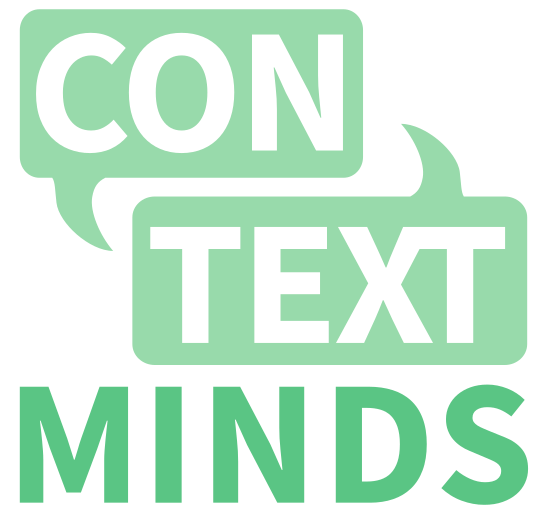How to Create a Perfect Blog Outline (3 Tools Included)
Being a content editor takes a lot of work.
You sit down at your desk, open your laptop and start brainstorming ideas.
Suddenly, you realize that you're not even sure where to start! You have a deadline looming, and the pressure is on.
The last thing you want is for the writers to receive a lackluster outline or for the blog post to turn out subpar.
You start feeling overwhelmed and frustrated.
But hold on a sec! You know you've got this. You just need to find a way to streamline the process and make it less painful.
I bet you've come across plenty of guides on creating a blog outline, right? But have they addressed the pain points you face as a content editor? That's where this guide is different.
The key takeaway from this blog post is a 10-steps process for creating a content outline aligned with your audience, purpose, and goal.
And to make the process even easier, I'll introduce you to three of the best blog post outline generators to help streamline your work.
By the end of this guide, you'll be able to create an outline that sets your content up for success and saves you time in the long run.
So let's get started!
The Fine Line: Content Brief vs. Content Outline
You know what's funny? Even the best of us can get confused between a content brief and a content outline. They may sound similar, but they serve very different purposes. Let me give you an example to help clear things up.
Imagine you've been asked to write a blog post on "How to Use a Keyword Mapping Tool". Now, a content brief would give you the big picture of what the post should be about - its purpose, target audience, tone, and so on. But it wouldn't necessarily provide a step-by-step guide on how to use the tool.
On the other hand, a content outline breaks down the post into specific sections, headings, and subheadings. It provides a clear structure to follow while writing the post, making it easier to create a cohesive and well-organized piece of content.
So, understanding both concepts (and the difference between them) is crucial for creating an effective content that meets the purpose, goals, and audience expectations.
And now, as promised, here is
A 10-steps process to creating a perfect content outline
1. Define the purpose and goal of the content
The first step to creating a comprehensive and effective content outline is defining its purpose and goal.
When starting, ask yourself, "what is the overall theme or topic of the content?" and "what message do I want to convey with this content?"
A clear understanding of your content's purpose and goal will help guide your research and decision-making throughout the entire outline process.
Let's use our previous example: "how to use a keyword mapping tool."
Your purpose could be to educate the reader on the benefits of using a keyword mapping tool and to show them how to effectively use it. Your goal could be to convince the reader to try using a keyword mapping tool to improve their content creation process.
By keeping these questions in mind, you can ensure that every aspect of your outline is aligned with the purpose and goal of your content.
2. Conduct research and gather information
When conducting research and gathering information for your project, decide on the methodology first.
In this case, you will create a blog on "using a keyword mapping tool," so use a combination of primary and secondary research methodologies.
To start, collect data through online surveys, industry reports, and competitor analysis to better understand the market and consumer behavior.
Also, analyze existing keyword mapping tools in the market to identify gaps and opportunities.
Next, gather information from various sources such as blogs, forums, and social media to understand your target audience and their needs.
You can also reach out to industry experts and influencers to gain insights and perspectives.
By following these research and information-gathering steps, you can ensure that you have a comprehensive understanding of the market and target audience, which will help you create a successful keyword mapping tool.
3. Define target audience
Having a clear understanding of your target audience helps ensure that your content is tailored to meet their needs and wants and, ultimately, resonates with them.
When defining your target audience, ask yourself the following questions: Who are they? What are their characteristics? What are their needs and wants?
A good way to think about your target audience is to imagine yourself as a customer of your product.
For instance, if you're writing about a keyword mapping tool, your target audience could be marketers looking for a way to streamline their SEO efforts.
By getting to know your target audience, you'll be able to craft content that speaks directly to them and motivates them to take action.
4. Identify key topics and subtopics
By exploring what topics are related to the purpose and goal of the content, you can ensure that you're covering all relevant information.
Consider breaking down each key topic into subtopics to provide a comprehensive and in-depth understanding of the subject matter.
Including AI-generated keyword tools, like ContextMinds, here can make the entire process much easier.
Just put in your seed keyword, and let the tool suggest related terms, questions, and trending topics. These suggestions are based on real-time data, which means they are always up-to-date, and you can pick the ones relevant to your target audience.
5. Organize topics into a logical structure
Organizing your content in such a way that it is easy to follow, engaging, and effective in conveying your message.
With a clear structure, your content is more likely to be understood and retained by your audience. In this step, use a keyword visualization tool, like ContextMinds, to visually map out your content and see how all the different topics and subtopics fit together. By having a clear picture of the structure, you can easily make changes and rearrange topics.
6. Add subheadings, bullet points, and supporting details
Adding subheadings, bullet points, and supporting details breaks down the information into easily digestible chunks and makes the content visually appealing. Breaking down information this way makes it easier to understand and follow the content flow.
For example, to create a well-structured and easy-to-follow blog post about keyword mapping tools, you should add subheadings, bullet points, and supporting details to your outline to make the information more organized and accessible.
You can start by adding a subheading for each key topic, such as "Benefits of Using Keyword Mapping Tools." Under this subheading, add bullet points that highlight specific benefits, such as "Improved Keyword Research Process" and "Enhanced SEO Strategy."
Now to add supporting details to each bullet point, include real-life examples or case studies demonstrating how keyword mapping tools can help improve the keyword research process and enhance SEO strategies.
Doing all these things will make the information easier to follow and help your readers understand the importance of using keyword mapping tools.
7. Ensure the outline is aligned with the target audience and purpose
Once the outline is complete, it's important to ensure that it aligns with the target audience and purpose you defined earlier.
To do this, review the outline and ask yourself if the content addresses the target audience's concerns.
If it doesn't, it's time to make changes to the outline so that it's more relevant and engaging.
With a keyword mapping tool, you can easily visualize the content and make changes as needed to ensure that it's aligned with the target audience and purpose.
But what should you do if you find the outline misaligned after all these steps?
Here are the potential changes you can make:
- Reorganizing the topics and subtopics to better appeal to the target audience
- Adding or removing information to better cater to the target audience's interests
- Refining the language and tone to better match the target audience's level of understanding and preferences
- Adjusting the structure of the outline to better convey the purpose and achieve the desired outcome.
8. Articulate the conclusion's outcome for the writer
Instead of leaving it up to the writer to decide how to end the blog and what CTA to use, add your final thoughts here.
As you are the one who did the ideation, research and outlining, you are the best person to come up with the conclusion.
Your conclusion should convey the central message of the post and summarize the key points into a cohesive message. The tone should be clear and confident and inspire the reader to take action.
Think about the action you want the reader to take after reading your post. It could be something as simple as leaving a comment, sharing the post with their network, or visiting your website to learn more. Make sure to include a specific call-to-action or phrase in conclusion to nudge the reader in the right direction.
9. Assign responsibility for each section to a writer or team member
By now, you've got a solid outline for your content. You know what it's about and who the audience is. Now it's time to assign responsibility for each section of the outline to a writer or team member.
Once you've assigned sections, your team can start working on those sections independently. Make sure everyone clearly understands what needs to be covered in their section before assigning them responsibility for writing it.
It's important to keep the overall vision of the content in mind when assigning responsibility for each section. You want to ensure that all parts of your outline are fully covered without going into too much detail.
10. Agree on a timeline for completion
The last step is to agree on a timeline for completing the content. You might want to set up a meeting with your writers and get them to sign off on it.
Once you've got everyone on board, you need to make sure that everyone agrees on what exactly "completed" means. Is it when the first draft is done? Or when the final version is ready? Make sure that everyone's clear on what they need to do and when they need to do it so your team can stay on track.
You should also decide who has ownership over managing and tracking this timeline. This doesn't necessarily have to be a single person—maybe it's more efficient if multiple people are involved in monitoring progress and making adjustments as necessary.
Whatever timeline you choose, communicate it to your entire team carefully.
3 Best AI-powered Blog Outline Generators
1.
ContextMinds
ContextMinds is a cutting-edge visual thinking tool that revolutionizes how you capture and share your ideas. With its powerful keyword prompts and intuitive interface, ContextMinds makes it easy to create and expand upon concept maps that help you visually organize your thoughts and ideas.
Whether you're a creative thinker looking for inspiration, or a student looking to build a knowledge graph on a subject, ContextMinds has you covered.
With its unique features, like the ability to suggest related concepts and its dynamic list of keyword suggestions, ContextMinds is a constantly evolving source of creative stimuli.
From brainstorming a new project to building a knowledge graph on a subject, the suggestions from ContextMinds will help you expand and refine your concept map in new and exciting ways.
ContextMinds' intuitive interface makes it simple to add new concepts, link existing ideas together, and capture more detailed information like notes, files, images, and tags. And with the ability to export your maps to PNG, SVG, and PDF formats, it's easy to share your concept maps with others.
With our “Note & Research” feature, you can add comments, external links, and your own notes for the writer’s reference. You can even drag the notes in the canvas and put it under the section you like.
This way, you won’t have to comment or inform anything explicitly and the writer will access everything from one place — without going through multiple documents.
So why wait? If you're looking for a powerful, flexible, and user-friendly visual thinking tool, look no further than ContextMinds.
We also have a free forever plan where you can create up to 5 private and unlimited public maps. So, sign up now and start experiencing the benefits of this powerful visual thinking tool. Trust me, you won't regret it!
2. Surfer
Surfer is another powerful SEO tool that streamlines your optimization process. The SERP Analyzer gives you an in-depth analysis of top-ranked pages for your target keyword, providing valuable data such as keyword density, use of partial match keywords, and more. With this information, you can replicate your competitors' successful on-page SEO strategies to improve your rankings.
Surfer also has a Content Editor that helps you easily create search engine-optimized content. The tool suggests LSI keywords and topics based on the top-ranked pages and provides a content outline with questions to answer. You can share your report with writers without requiring them to log in, making collaboration simple.
Surfer puts the actionable insights you need right at your fingertips. Optimize your content with confidence, knowing that you're using a tool designed to help you rank higher on Google.
3. MarketMuse
MarketMuse is an AI-powered content marketing tool that revolutionizes how you create content. With its advanced machine learning and artificial intelligence, it provides a complete analysis of your website, suggests topics to cover, and develops comprehensive briefs to help you create the most compelling content. Whether you're a large agency or brand, MarketMuse has something to offer.
MarketMuse offers two main types of features: Inventory and Applications. The inventory tracks all the content on your website and provides detailed insights, while Applications are tools you can use to research and plan your content. You can access Pages, Research, Compete, ask Questions, Connect, and Optimize with Inventory. These features help you streamline your research, improve your content ranking, easily perform content audits, and create comprehensive content briefs.
With its AI-driven suggestions, you can easily optimize your content and make sure that it ranks well in search engines like Google.
Conclusion
Creating an outline for your blog is an important step in the writing process.
By following the 10-step process outlined in this article, you can ensure that your blog is well-structured and covers all the key points you want to make.
Additionally, keyword outline generators, like ContextMinds can provide you with some great ideas and help streamline the process.
Remember, the goal is to create an outline that will guide your writing and help you stay focused on your main message. So take time to carefully plan and organize your thoughts, and you'll be well on crafting a successful blog post.

Useful links
Contact info
+420 607 881 942
info@contextminds.com
ContextMinds s.r.o
Blanická 922/25, Prague, Czechia
All Rights Reserved | EMC Engineering, s.r.o.









